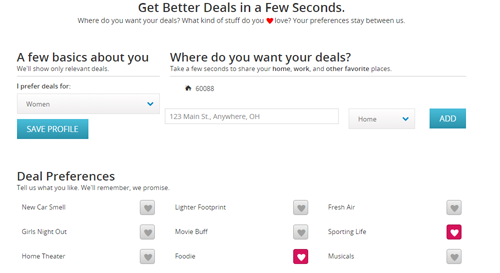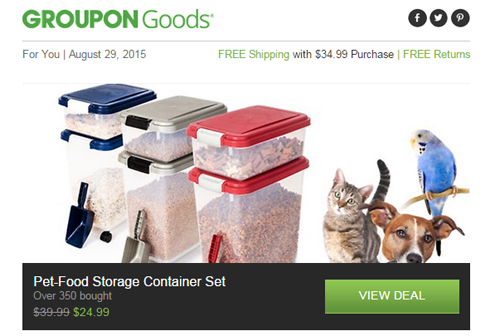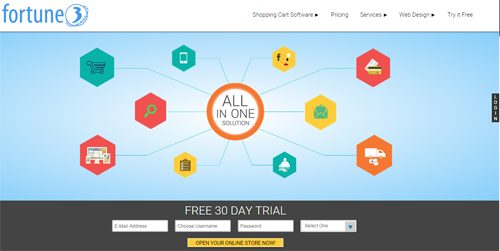4 Examples of Greedy Marketing Campaigns

With so many brands competing for consumers' attention and on so many channels (search, social, email, etc.), it's important marketers look in the digital mirror to get a grip on whether they are serving campaigns that are for them or for their end-user.
Website Magazine contributor Tim Ash, CEO of SiteTuners, recently published an article with us on how to recognize greedy marketer syndrome. In it, he outlined a quick diagnosis, so it's worth a read before diving into examples of greedy marketing campaigns.
Based on those theories, here are four marketing campaigns that prove to be of the selfish variety:
Batch-and-Blast Emails
With it being such a core part of its acquisition and retention efforts, Groupon can live and die (digitally, of course) by the emails it sends. Over the years Groupon has evolved its email strategy to include a lot of different personalization elements, such as by city, deal preferences, gender and more. One of the ways Groupon finds out about the kinds of deals its users want to receive is by a simple profile form (see image), which prompts users to fill in details about themselves (gender and location), as well as their deal preferences.

For the most part, Groupon users should find their emails from the deals company to be on par with what they have selected in their profile. In this way, Groupon cannot be diagnosed with greedy marketer syndrome. That said, its Groupon Goods division seems to miss the boat, as a person who hasn't selected "Pet Lover" as one of their deal preferences still receives the same Groupon Goods email as someone who has. In this way - sending the same message to everyone - Groupon provides a greedy marketing campaign example.

A Single Call-to-Action
Not all users are ready to convert as soon as they are presented with a marketing campaign or arrive on a landing page. Most people want to do a bit of research before they act (especially in the case of expensive items), so when a company only offers a "bottom of the funnel conversion action," the campaign can be described as selfish because the enterprise wants to, as Ash puts it, "cherry-pick" the people who want to act now, while ignoring the rest of them. This selfish marketing tactic can be seen on so many business-to-business websites, as the company wants the user to download or sign up for a free trial immediately.

Being Absent
Managing a social media presence is difficult. It requires consistently publishing engaging content and managing customer interactions. Even though it's difficult to create a successful social strategy as well as initiate it day in and day out, major brands must have a social presence because that is where many customers want to interact with them. Trader Joe's, for example, does not have social media profiles, which could be construed as the grocery brand not investing in their customer relationships.
They are known for their cheery in-store associates, and there are plenty of ways to replicate those engaging moments online. For starters, if a customer has a bad experience, they are likely going to go online to voice their opinion regardless of whether a company has a social presence or not. Having a customer representative on social channels to diffuse the situation and be emphathetic toward that customer, goes a long way in turning around a brand experience. Whole Foods, for example, validates and responds to customers' compliments and complaints.
@E_Stayblack Sorry to hear that, what's up? - Whole Foods Market (@WholeFoods) August 31, 2015
Low-Quality Content
As mentioned, managing a social presence is difficult, as it requires not only sending out relevant and engaging content, but also responding to customers' real-time requests. That said, relying on automated bots to retweet another company or publisher's content, can be seen as a selfish marketing act, because there isn't human intervention in terms of what that account's users will find interesting and helpful. While curating content is certainly a way to add value to a brand's messaging, it should be done with a human hand.
Tools like trap.it, however, can aid in content curation by gaining access to a library of content, but there should still be a governing person in the curation process. Users of Pagemodo, for example, can create their branded social posts using its Post Designer tool and then see suggested content to share based on their business profile.


Subscribe to Our Newsletter!
Latest in Marketing








